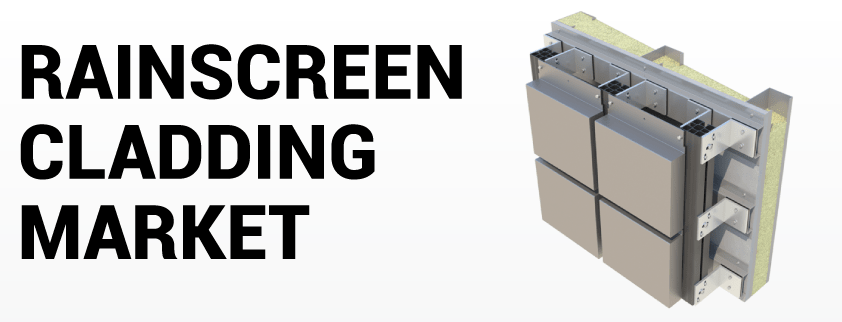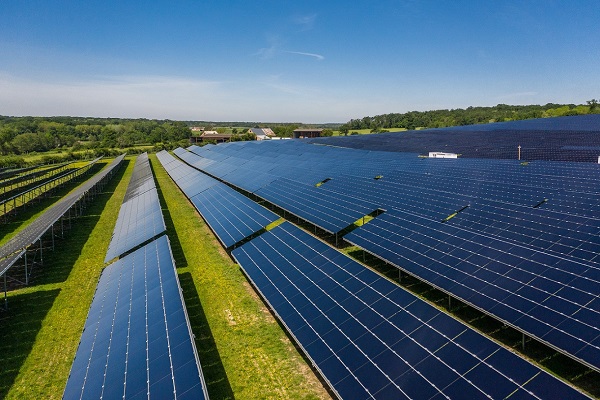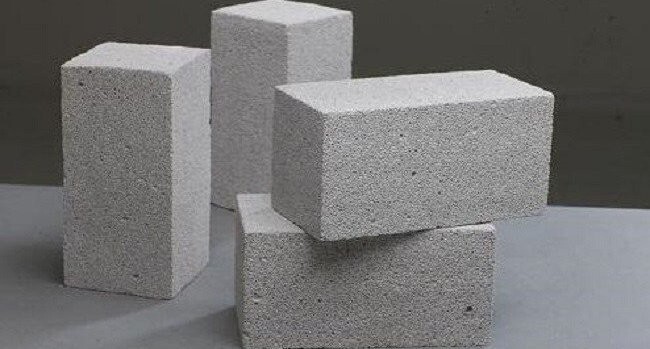Global Sandwich Panels market size was USD 6.51 billion in 2023 and the market is projected to touch USD 12.03 billion by 2032, at a CAGR of 7.06% during the forecast period. Sandwich panels are commonly used in construction for roofing, wall cladding, and insulation because of its high strength-to-weight ratio, thermal insulation capabilities, and ease of installation. The global sandwich panels market is expanding rapidly because to increased demand for energy-efficient and sustainable construction materials in industries such as construction, automotive, and aerospace. Rapid urbanization, increased infrastructure building activities, and stringent rules on energy efficiency and carbon emissions have all fuelled market expansion. Furthermore, technological improvements that result in the development of innovative sandwich panel designs and materials are projected to boost market expansion. However, the market faces challenges such as fluctuations in raw material prices and environmental concerns associated with the disposal of sandwich panels. Despite these challenges, the market is projected to continue its growth trajectory in the coming years, driven by the increasing adoption of sustainable building materials and the growing trend towards modular construction methods. Emerging economies in regions like Asia-Pacific and Latin America are expected to offer lucrative opportunities for market players, owing to rapid industrialization and urbanization in these regions.
Global Sandwich Panels report scope and segmentation.
| Report Attribute | Details |
| Base Year | 2023 |
| Forecast Years | 2024 – 2032 |
| Estimated Market Value (2023) | USD 6.51 Billion |
| Projected Market Value (2032) | USD 12.03 Billion |
| Segments Covered | By Material Type, By Construction Type, By Application, By End-use, & By Region. |
| Forecast Units | Value (USD Million or Billion) |
| Quantitative Units | Revenue in USD million/billion and CAGR from 2024 to 2032. |
| Regions Covered | North America, Europe, Asia Pacific, Latin America, and Middle East & Africa. |
| Countries Covered | U.S., Canada, Mexico, U.K., Germany, France, Italy, Spain, China, India, Japan, South Korea, Australia, Brazil, Argentina, GCC Countries, and South Africa, among others. |
Global Sandwich Panels dynamics
One of the main factors is the growing demand for environmentally friendly and energy-efficient building materials. This jump in demand is the result of increased environmental consciousness and tightened legislation aimed at reducing carbon footprints. At the same time, rising urbanization and infrastructural expansions around the world drive more demand, necessitating efficient building solutions. Furthermore, the market is experiencing a steady infusion of technological and material innovation, which is fostering the evolution of sandwich panel designs with improved features, hence driving market expansion.
However, alongside these factors, the market faces obstacles. Fluctuating raw material prices provide a substantial challenge, affecting production costs and profitability. Moreover, environmental concerns surrounding panel disposal, particularly those incorporating non-recyclable materials, cast a shadow over sustainability efforts. Geopolitical tensions and economic uncertainties also exert their influence, disrupting global supply chains and trade patterns, thereby affecting material availability and pricing dynamics.
Global Sandwich Panels drivers
Growing Demand for Energy-Efficient Construction Materials
The growing emphasis on sustainability and energy efficiency in construction projects is a primary driving force behind the sandwich panels industry. As regulations tighten and environmental consciousness grows, there is an increased demand for materials that provide better thermal insulation and a lower carbon impact. Sandwich panels, with their lightweight composition and superior insulating capabilities, are becoming increasingly popular for roofing, wall cladding, and insulation applications. In addition, as energy costs rise, builders and developers are becoming more aware of the long-term cost benefits associated with employing energy-efficient materials such as sandwich panels. This demand is further magnified by the necessity for green building certifications, which require the use of sustainable materials, increasing the adoption of sandwich panels in both residential and commercial construction projects.
Technological Advancements and Innovation
Another important driver of the sandwich panel market is ongoing innovation and improvements in materials science and technology. Manufacturers are spending in R&D to improve the performance and qualities of sandwich panels, making them stronger, lighter, and more adaptable. This involves the development of innovative core materials like aerogel or vacuum insulated panels (VIPs), which provide greater thermal insulation while reducing total weight. Furthermore, improvements in manufacturing processes, such as automated production lines and digital fabrication techniques, are increasing efficiency and lowering production costs. These technological improvements not only drive product innovation, but also enable producers to cater to a broader range of applications and sectors, thus extending the market potential for sandwich panels.
- Restraints:
Fluctuating Raw Material Prices
The volatility of raw material prices is a major constraint on the sandwich panels business. Prices for essential raw materials such as steel, aluminum, and polymers fluctuate due to global supply and demand dynamics, geopolitical concerns, and currency exchange rates. These variations can have a substantial impact on sandwich panel producers’ production costs, profit margins, and pricing strategies. Furthermore, abrupt increases in raw material prices can disrupt supply networks and cause shortages, affecting production schedules and delivery timeframes. To reduce the impact of shifting raw material prices, manufacturers may turn to hedging tactics, long-term supply agreements, or other sourcing possibilities, although these efforts may not always be adequate to offset the volatility in pricing.
Environmental Concerns and Regulations
Environmental concerns about the disposal of sandwich panels, particularly those containing non-recyclable materials, have a considerable impact on the market. As governments throughout the world impose stronger rules to reduce environmental pollution and encourage sustainable practices, industries are under increasing pressure to adopt eco-friendly production processes and materials. Sandwich panels, particularly those composed of non-biodegradable materials such as expanded polystyrene (EPS) or polyurethane foam, raise environmental problems, especially during disposal. Furthermore, restrictions governing the use of certain chemicals or flame retardants in sandwich panel production may further limit market growth, as manufacturers must assure compliance with environmental requirements while preserving product performance and safety.
- Opportunities:
Rise of Prefabricated Construction
The growing popularity of prefabricated and modular construction technologies creates another big opportunity for the sandwich panel sector. Prefabricated building systems, which entail the assembly of pre-engineered components off-site before being transported and placed on-site, provide various benefits, including shorter construction timelines, lower costs, and less material waste. Sandwich panels, with their lightweight and easy-to-install qualities, are ideal for use in prefabricated building systems that require speed and efficiency. Furthermore, sandwich panels can be tailored to specific design specifications, giving architects and builders greater freedom in their construction projects. As demand for prefabricated construction continues to expand, driven by reasons like as urbanization, housing shortages, and the need for sustainable building solutions, the market for sandwich panels is also expected to develop significantly.
- Segment Overview
The segmentation by material type includes a wide range of possibilities to meet a variety of construction needs. Polyurethane, polyisocyanurate, and expanded polystyrene are lightweight and have high thermal insulation qualities, making them attractive choices for wall and roof panels in new construction and remodelling projects. Mineral wool has exceptional fire resistance and acoustic insulation, making it ideal for situations where safety and soundproofing are critical. Continuous fiber-reinforced thermoplastics and fiberglass-reinforced panels provide increased strength and endurance, making them excellent for harsh situations such as industrial buildings or high-traffic areas. Aluminum and steel panels give structural stability and lifespan; they are often utilized in commercial and industrial buildings. Other materials, including composite panels or hybrid solutions, offer unique combinations of properties to meet specific project requirements, providing versatility and customization options for builders and architects.
The construction type segment distinguishes between new construction projects and repair/renovation projects. Sandwich panels are installed at the early building phase of new construction projects, giving architects and developers the freedom to incorporate energy-efficient and long-lasting materials into their designs from the start. Sandwich panels provide a cost-effective alternative for improving thermal performance, aesthetics, and structural integrity without the need for substantial demolition or reconstruction. Sandwich panels play an important part in modern construction processes, delivering efficiency, adaptability, and ecological benefits.
Get Complete Research Report: https://organicmarketresearch.com/global-sandwich-panels-market
Global Sandwich Panels Overview by Region
In North America, the market is driven by strong construction activity in sectors such as commercial and residential structures, which is fuelled by urbanization and rehabilitation projects. Stringent construction requirements and an increased emphasis on energy efficiency are driving the adoption of sandwich panels, particularly those with exceptional insulation capabilities. In Europe, stringent regulations governing energy efficiency and sustainability drive demand for environmentally friendly building materials, establishing sandwich panels as the preferred alternative for new construction projects. The region also sees an increasing tendency toward prefabricated construction methods, which boosts the demand for sandwich panels. Asia-Pacific develops as a profitable market, with rising urbanization, industrialization, and infrastructure development boosting demand for construction materials such as sandwich panels. Emerging economies like China and India are key contributors to market growth, supported by government initiatives aimed at promoting sustainable building practices. Additionally, the Middle East and Africa region exhibit significant potential due to ongoing infrastructure projects and a growing focus on sustainable development.
Global Sandwich Panels market competitive landscape
Major firms like Kingspan Group, Metecno, and ArcelorMittal dominate the industry due to their extensive product ranges and global reach. These organizations specialize in producing advanced sandwich panel solutions adapted to specific customer needs, utilizing technologies such as continuous manufacturing methods and sustainable materials. Furthermore, strategic partnerships with architects, constructors, and building developers allow these companies to improve their market position and extend their customer base. Regional players also play an important role in meeting the needs of local markets and niche sectors through specialized products and services. With the increased emphasis on sustainability and energy efficiency in building, players are increasingly spending in research and development to create environmentally friendly and high-performance sandwich panel solutions. Moreover, mergers and acquisitions remain a common strategy among market players to enhance their market share, geographic reach, and technological capabilities. As competition intensifies, companies are focusing on differentiating their offerings through factors such as product quality, price competitiveness, and after-sales support to maintain a competitive edge in the market.
Global Sandwich Panels Recent Developments
- In March 2024, BASF and Shandong Wiskind Architectural Steel Co., Ltd. (Wiskind) have strengthened their strategic collaboration by extending their sustainable polyurethane (PU) sandwich panel range tailored for cold chain applications. As Asia’s inaugural PU sandwich panel manufacturer to obtain ISCC PLUS (International Sustainability and Carbon Certification) certification, Wiskind will showcase its PU sandwich panel crafted using BASF’s Biomass Balance.
Contact Us:
Mob : +91 9319642100
Noida One Tower Sec 62 Noida 201301
Sales : sales@organicmarketresearch.com
Website : https://www.organicmarketresearch.com















